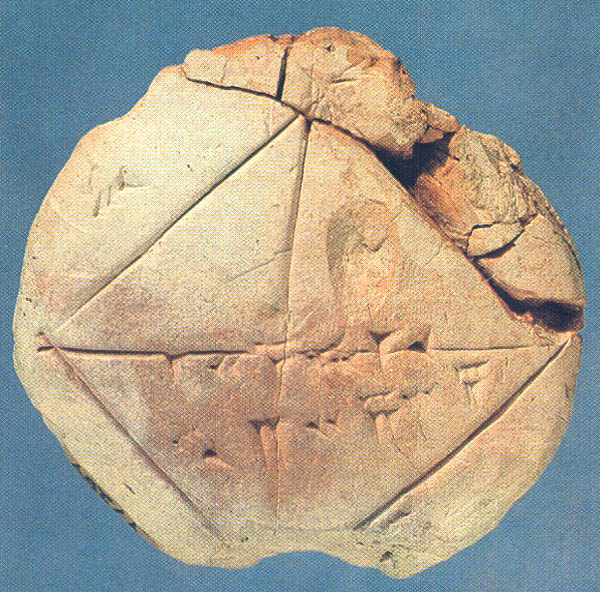Image Details

Yale Babylonian Collection
Mathematical exercise tablet. Twelve hundred years before Pythagoras, the Babylonians seem to have known the Pythagorean theorem. This 2.8-inch-diameter clay tablet, dated to about 1750 B.C., bears an incised square, divided by two diagonal lines. The cuneiform wedge marks are numbers. The three marks next to the upper left side stand for 30, the length of each side of the square. Two horizontal lines of numbers appear within the square.
The length of the diagonal is accurately shown as 42.4226 …, the result obtained when 30 is multiplied by the square root of 2 in accordance with the Pythagorean theorem. However, the calculations on this tablet employ the sexigesimal number-system invented by the Sumerians, a system that counts by sixties rather than by tens. Thus the numbers within the square are sexigesimal equivalents of decimals. The top line gives the calculation for the square root of 2; the bottom line shows the solution, the length of the diagonal (42 and 25/60 and 35/3600).
The sexigesimal number-system survives in our 60-second minute and 60-minute hour.
